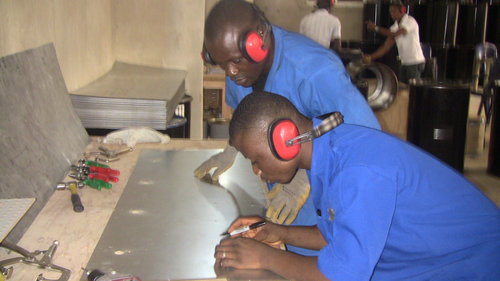Recurring growth without industrialisation: occupational structures in northern Nigeria, 1921-2006
by Emiliano Travieso (University of Cambridge)
—

Despite recent decades of economic growth, absolute poverty is on the rise in Nigeria, as population increases continue to outpace the reduction in poverty rates. Manufacturing industries, which have the potential to absorb large numbers of workers into better paying jobs, have expanded only very modestly, and most workers remain employed in low productivity sectors (such as the informal urban economy and subsistence agriculture).
This scenario is particularly stark in the northern states, which concentrate more than half of the national population and where poverty rates are at their highest. As the largest region of the most populated nation in the continent (and itself three times as large as any other West African country), quantifying and qualifying northern Nigeria’s past economic development is crucial in order to discuss the perspectives for structural change and poverty alleviation in sub-Saharan Africa.
My research traces the major shifts in the economy of northern Nigeria during and since colonial rule through a detailed study of occupational structures, based on colonial and independence-era censuses and other primary sources.
While the region has a long history of handicraft production – under the nineteenth-century Sokoto Caliphate it became the largest textile producer in sub-Saharan Africa – northern Nigeria deindustrialised during British ‘indirect rule’. Partially as a result of the expansion of export agriculture (mainly of groundnuts and, to a lesser extent, cotton), the share of the workforce in manufacturing decreased from 18% to 7% in the last four decades of the colonial period.
After independence in 1960, growth episodes were led by transport, urban services and government expenditure fuelled by oil transfers from the southeast of the country, but did not spur significant structural change in favour of manufacturing. By 2006, the share of the workforce in manufacturing had risen only slightly: to 8%.
In global economic history, poverty alleviation has often resulted from a previous period of systematic movement of labour from low- to high-productivity sectors. The continued expansion of manufacturing achieved just that during the Industrial Revolution in the West and, in the twentieth century, in many parts of the Global South.
In large Asian and Latin American economies, ‘late industrialisation’ sustained impressive achievements in terms of job creation and poverty alleviation. In cases such as Brazil, Mexico and China, large domestic markets, fast urbanisation and improvements in education contributed decisively to lifting millions of people out of poverty.
Can northern Nigeria, with its large population, deep historical manufacturing roots and access to the largest national market in Africa, develop into a ‘late industrialiser’ in the twenty-first century? My study suggests that rapid demographic growth will not necessarily result in structural change, but that, through improved market integration and continued expansion of education, the economy could harness the skills and energy of its rising population to produce a more impressive expansion of manufacturing than we have yet seen.

